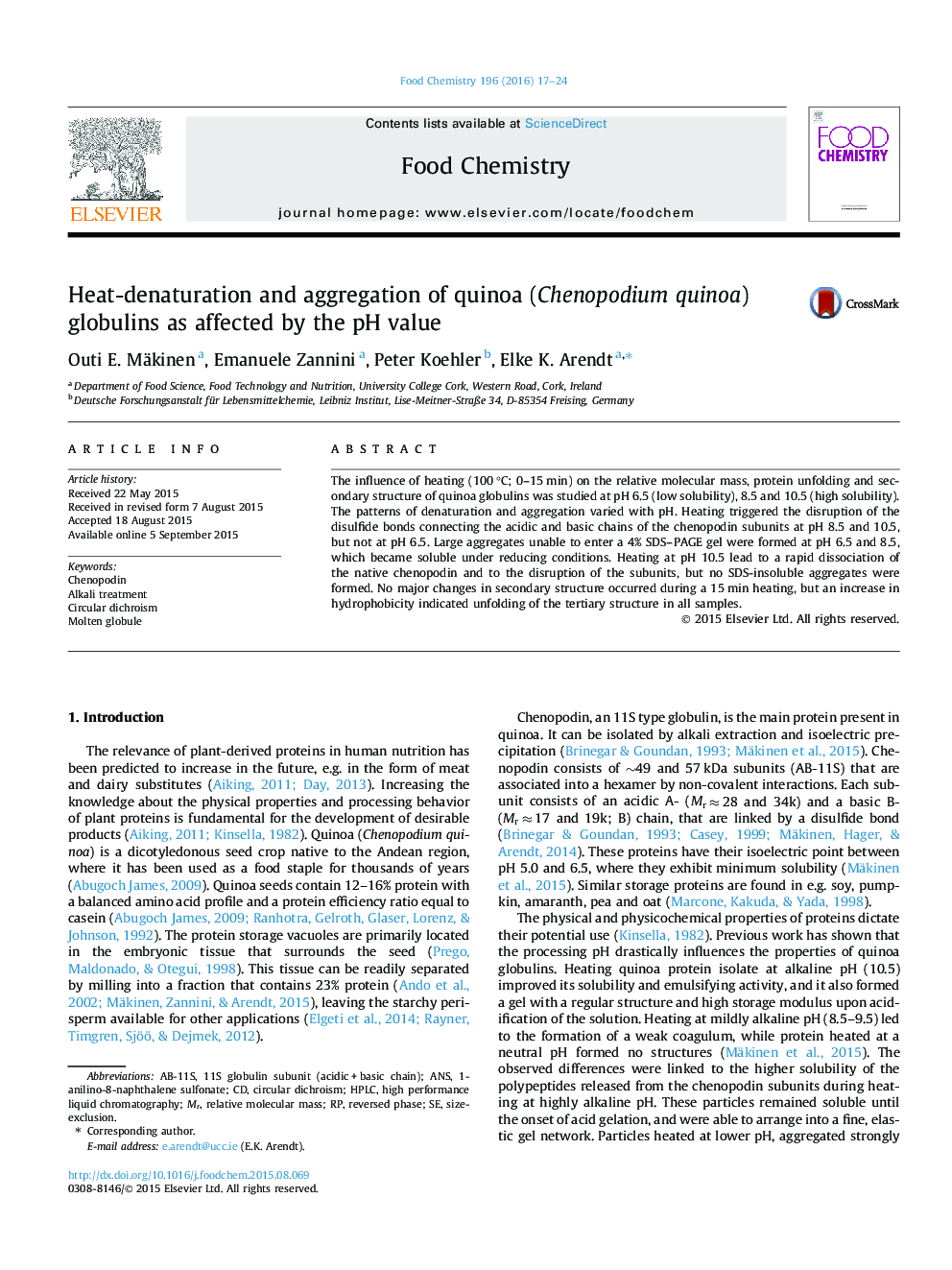| Article ID | Journal | Published Year | Pages | File Type |
|---|---|---|---|---|
| 1184127 | Food Chemistry | 2016 | 8 Pages |
•Disulfide bonds were disrupted by heating quinoa globulins at alkaline pH but not at neutrality.•The oligomeric proteins dissociated rapidly at highly alkaline pH.•Extensive disulfide-driven aggregation did not occur was not observed at highly alkaline pH.•Heat-treatments in this study did not alter the secondary structure.
The influence of heating (100 °C; 0–15 min) on the relative molecular mass, protein unfolding and secondary structure of quinoa globulins was studied at pH 6.5 (low solubility), 8.5 and 10.5 (high solubility). The patterns of denaturation and aggregation varied with pH. Heating triggered the disruption of the disulfide bonds connecting the acidic and basic chains of the chenopodin subunits at pH 8.5 and 10.5, but not at pH 6.5. Large aggregates unable to enter a 4% SDS–PAGE gel were formed at pH 6.5 and 8.5, which became soluble under reducing conditions. Heating at pH 10.5 lead to a rapid dissociation of the native chenopodin and to the disruption of the subunits, but no SDS-insoluble aggregates were formed. No major changes in secondary structure occurred during a 15 min heating, but an increase in hydrophobicity indicated unfolding of the tertiary structure in all samples.
